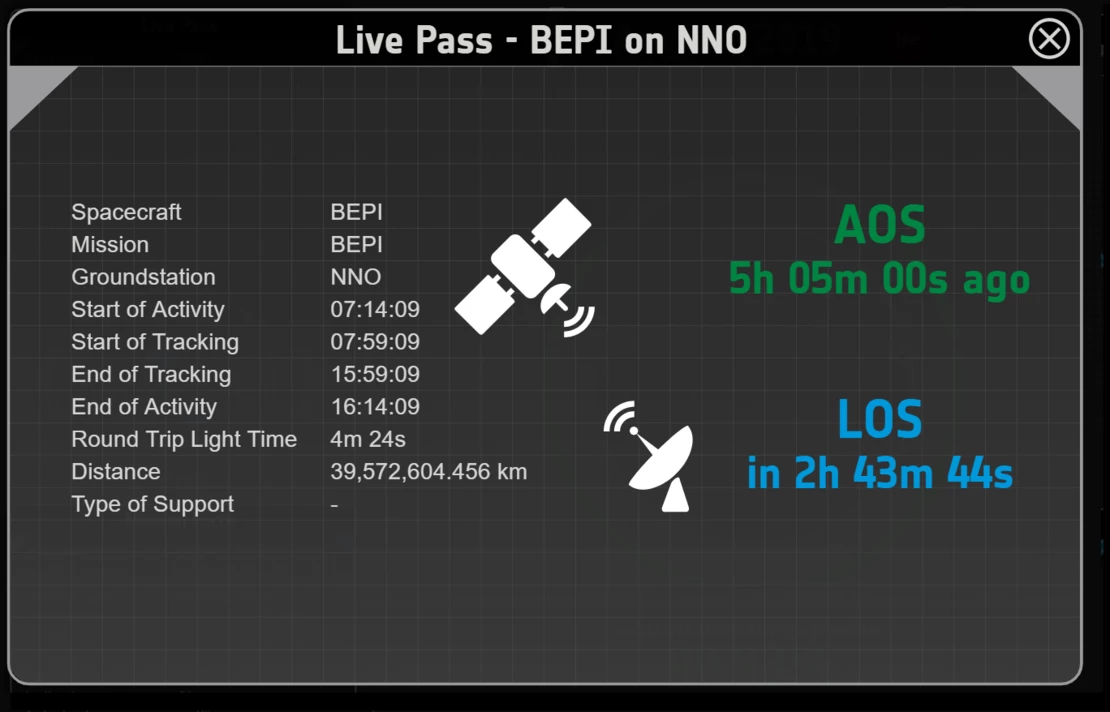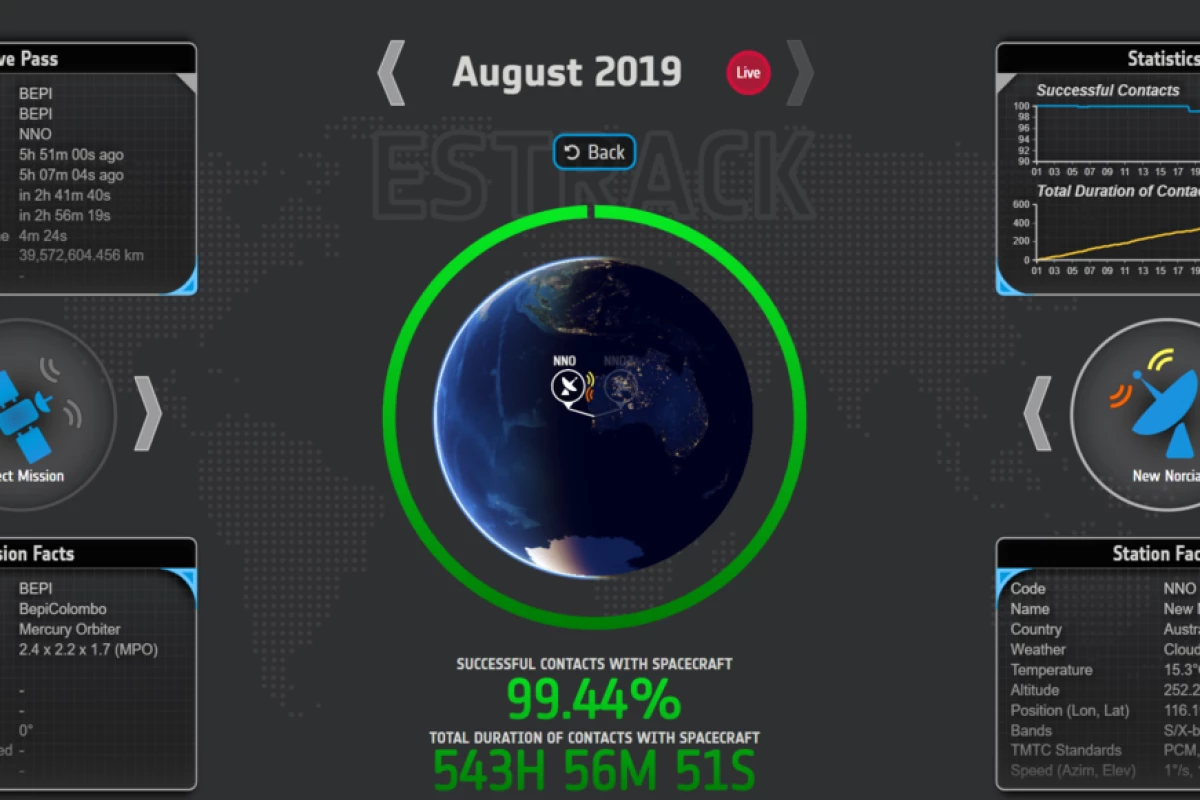The European Space Agency has released a new tool that allows space enthusiasts to track their favorite missions in real time as they communicate with ground stations back on Earth. The service provides a range of information on spacecraft and antennae, including how long it takes for a signal to travel between the two, and the distance that separates them.
Communicating with distant spacecraft hurtling through interplanetary space is a global affair, and requires a direct line of sight between probe and antenna. Powerful listening stations must be spread across the globe ensuring that a spacecraft is in contact with, and able to receive communications and commands from, their handlers back on Earth as often as possible.
A new service from ESA is shining a spotlight on the communications infrastructure behind these probes, allowing fans live insight as to how, when, and with what spacecraft are communicating.

The tool, called EstrackNOW, uses information collected from the ground-based tracking stations used by ESA, which collectively form the European Space Tracking (ESTRACK) network. Missions currently supported by the tool range from Earth observation endeavors such as the Copernicus Sentinel missions to the Mars Express orbiter, which is currently busy probing the secrets of the Red Planet.
To focus on a spacecraft, you simply click on the icon to the left-hand side of the page and a wheel of 11 icons appears around the Earth, each representing a different mission. Select your desired robotic explorer and four boxes will appear in each corner of the page. The Live Pass box gives information on the current communication session, while Mission Facts gives you a summary of the spacecraft and its mission.
To the right of the page are facts about the ground station and statistics as to its recent performance. All of the info boxes can be expanded, providing extra information.

In the same way that you can select a specific mission, users can also check in on how specific ground stations are being used by clicking on the icon to the right of the page and selecting the preferred comms post.
Alongside providing up to date information, the tool also presents users with a series of informative videos and links via the "More on Estrack" button at the bottom of the page.
The ESA video below gives an overview of how deep space communication works.
Source: ESA




